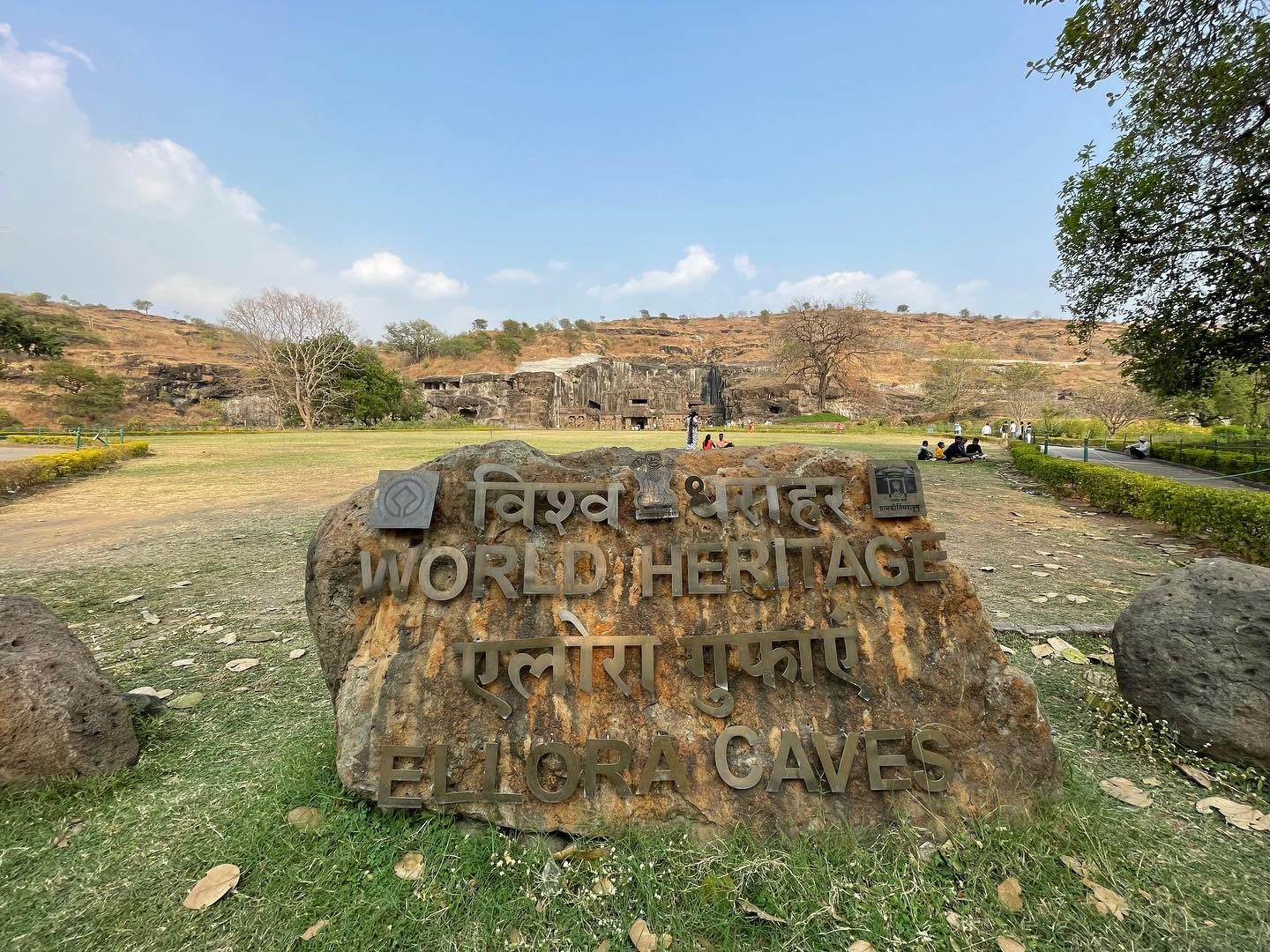6th Oct ‘21: All India Road Trip: Telangana: Ramappa Temple – Warangal
So far:
2 States
Distance Covered: 845 km
Previous stops: Hyderabad, Anantapur, Bengaluru
Next stops: Jagdalpur, Raipur, Amarkantak
Would you know any other temple that is named after the architect of the temple?
While there could be other temples that took years to build, this is one temple that the architect worked on for 40 years.
That’s the Ramappa temple. It’s around 160 kms from Hyderabad and around 70 kms from Warangal. A marvellous work of art and architecture.
Built by the Kakatiya rulers around 800 years ago, this is a magnificent temple that has stood the test of time, withstanding earthquakes and other natural disasters.
Till recently India had 38 sites. This year Ramappa temple, that is 67 kms away from Warangal, and around 160 kms from Hyderabad, is included. On our way to Warangal, we visited this Temple on 6th October, 2021.
The Temple
Marco Polo called it the ‘Brightest star in the Galaxy of Medieval Temples”. PV Narasimha Rao, the former Prime Minister, called it Symphony in Stone.






History
Rudreshwara temple which is popularly known as Ramappa Temple dates back to 1213 AD. It was built during the reign of Kakatiya kingdom. Dedicated to Lord Shiva, it is the said to be the only temple in the country which is known by the name of its sculptor, whose name was Ramappa.
It was built by the patronage of the Kakatiya ruler Kakati Ganapathi Deva under the authority of his Chief Commander Rudra Samani at the place known as Ranakude in the Atukuru province.
It took 40 years to be completed. Can you believe that Ramappa worked on it for 40 years?

Temple Architecture
All the Kakatiya temple structures are in star style and the Ramappa temple is also in the same shape.
The carvings are the most striking feature of the temple. The basic elements of Indias great dance form: the Mudras, the Posture, the attire, the aesthetics ( rasas), are depicted to perfection.
Dance guru Nataraja Ramakrishna used the dance poses carved in this temple to revive Perini Sivatandavam, a Kakatiya-era warrior dance form performed by men.

Rainwater Drainage System of the Kakatiyas
The technical mastery of the Kakatiyas can be understood by the rainwater drainage system that was set up around the temple. Kakatiyas realised the importance of water and developed an irrigation system to conserve rain water. The Kakatiyas, who ruled for over 400 years, realised that in the absence of excess rainfall, there was a need to manage with what they got.
“They studied the topography of the land and if a lake got filled downstream, they created other lakes in a chain. The essence was to store rainwater. Bowlis were used to raise groundwater levels,” Dr Safiullah said.
Technology Marvels
Apart from its religious significance and historical importance and structural brilliance, Ramappa temple is known for a few unique aspects as well. The bricks used in building the Ramalingeswara Temple are light weight. Unlike other stones, these bricks float in water instead of sinking. These floating bricks are used for the roof. It ensures that there is less pressure on the pillars.
Another aspect to notice in this temple is the pillars. Each pillar of the temple depicts sculptures and stories from mythology. It is also said that if you hit a pillar or a stone of this temple, you can hear musical sounds.
The 800-old Ramappa temple is still intact today because the baser of the temple was constructed in sandbox technology.The technique involved filling the pit — dug up for laying the foundation — with a mixture of sand-lime, jaggery (for binding) and karakkaya (black myrobalan fruit) before the buildings were constructed on these ‘sandboxes’. The sandbox in the foundation acts as a cushion in case of earthquakes. For low level earthquakes, the vibrations are absorbed by the sandbox technology used in foundations. For large level earthquakes, they developed a unique technique. Small tunnel like holes were made through all the stones used in the construction of walls, pillars & rooftops. Melted iron is poured these tunnel like holes which will form iron dowels that holds these stones together.
This technology ensures that the weathering rate ( breaking down of rocks) is slow. Hence the structure can last for hundred of years.
The temple remained intact even after repeated wars, plunder and destruction during wars and natural disasters. There was a major earthquake during the 17th century which caused some damage. It survived the earthquake due to its ‘sandbox technique’ of laying foundation.
The Shivalingam is visible even without electric lights in the Sanctorum. The mahamandapana in front of the Sanctorum has four large black stone pillars. The lingam looks brighter as the outer light falls on it.
Journey to becoming a UNESCO World Heritage Site
The contribution of great modern writers and poets in promoting the temple has been enormous. In 1957, former Prime Minister of India PV Narasimha Rao wrote “Symphony in Stone” among his essays in “Illustration of India” and got it published to promote the importance of the temple site. Mandala Malla Reddy, believed to be a descendant of Recharla Rudra, gathered a lot of data and compiled a book. From Gnanpeeth awardee Dr C Narayana Reddy, who wrote a musical story titled ‘Ramappa,’ dedicated to Dr PuttaparthiSreenivasacharyulu who spent his entire life on archaeological research, to Indian archaeologist Ghulam Yazdani, many people did their bit in protecting the temple.
Efforts for getting the heritage sites tag started soon after the establishment of the Kakatiya Heritage Trust in 2009 by BV Papa Rao, former IAS officer.
2012 – On the occasion of 800 years since the temple came into existence, heritage activists and others lighted 10,000 candles at the site to spread the word on the need to conserve it.
2014/15 – Though the temple was listed tentatively for nomination in 2014, it was only after the formation of Telangana, when Papa Rao became an advisor for Chief Minister K Chandrashekar Rao, that a dossier was prepared with the help of historians, in 2015.
2016 – The dossier was sent to the GOI, requesting it to propose nomination of the temple. However, the PM was reportedly not keen on promoting this temple back then.
2016/17 – Efforts to nominate the temple failed owing to heavy competition among world heritage sites.
2018 – A team from UNESCO experts visited the temple.
2019 – A nomination dossier was sent, after which experts from ICOMOS visited the site. In November 2019, Papa Rao and his delegation went to Paris, where they explained about the outstanding universal value of the temple site.
2020 -The nomination was considered and was taken up in the 44th session of the World Heritage Committee which was hosted at Fuzhou. They finally inscribed the temple in the list.
To be included on the World Heritage List, sites must be of outstanding universal value and meet at least one out of ten selection criteria.
The criteria are regularly revised by the Committee to reflect the evolution of the World Heritage concept itself. Until the end of 2004, World Heritage sites were selected on the basis of six cultural and four natural criteria. With the adoption of the revised Operational Guidelines for the Implementation of the World Heritage Convention, only one set of ten criteria exists.
Selection criteria :
(i) to represent a masterpiece of human creative genius;
(ii) to exhibit an important interchange of human values, over a span of time or within a cultural area of the world, on developments in architecture or technology, monumental arts, town-planning or landscape design;
(iii) to bear a unique or at least exceptional testimony to a cultural tradition or to a civilization which is living or which has disappeared;
(iv) to be an outstanding example of a type of building, architectural or technological ensemble or landscape which illustrates (a) significant stage(s) in human history;
(v) to be an outstanding example of a traditional human settlement, land-use, or sea-use which is representative of a culture (or cultures), or human interaction with the environment especially when it has become vulnerable under the impact of irreversible change;
(vi) to be directly or tangibly associated with events or living traditions, with ideas, or with beliefs, with artistic and literary works of outstanding universal significance. (The Committee considers that this criterion should preferably be used in conjunction with other criteria);
(vii) to contain superlative natural phenomena or areas of exceptional natural beauty and aesthetic importance;
(viii) to be outstanding examples representing major stages of earth’s history, including the record of life, significant on-going geological processes in the development of landforms, or significant geomorphic or physiographic features;
(ix) to be outstanding examples representing significant on-going ecological and biological processes in the evolution and development of terrestrial, fresh water, coastal and marine ecosystems and communities of plants and animals;
(x) to contain the most important and significant natural habitats for in-situ conservation of biological diversity, including those containing threatened species of outstanding universal value from the point of view of science or conservation.
The protection, management, authenticity and integrity of properties are also important considerations. Since 1992 significant interactions between people and the natural environment have been recognized as cultural landscapes.
In order for a site to be nominated to the World Heritage List, it must be included on its country’s Tentative List. The List may be updated at any time, but a site must be included on the Tentative List for at least one year to be considered for nomination.
The application process takes at least 18 months and is highly complex. This has led to the fact that World Heritage Sites are mostly found in Europe, North America and Asia, since other continents lack the personnel or know-how to make the application.
Once a site has been nominated and evaluated, it is up to the intergovernmental World Heritage Committee to make the final decision on its inscription. Once a year, the Committee meets to decide which sites will be inscribed on the World Heritage List.
The World Heritage Committee assesses nominated places against set criteria and makes the final decision as to the places that are included on the World Heritage List.
In total, there are 1,121 monuments listed in UNESCO sites, across 167 countries.
Italy & China have 55 each sites while India is having 40 sites (6th highest). Kakatiya Rudreshwara (Ramappa) Temple is latest to be added (2021).







